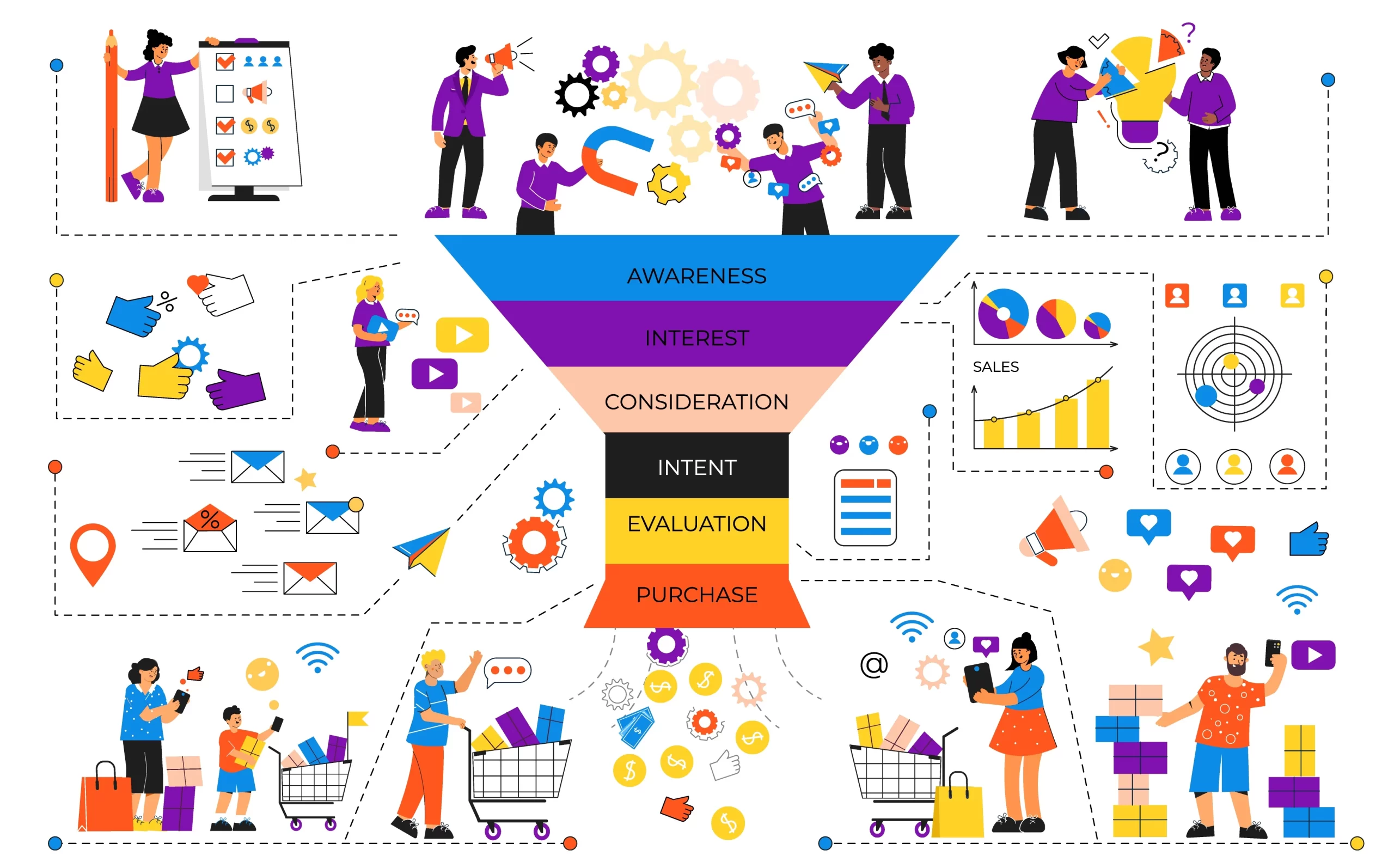A lead generation funnel is the key to consistently attracting, engaging, and converting potential customers into paying clients. Without a structured funnel, businesses struggle to capture leads, nurture relationships, and drive sales. This guide’ll walk you through the steps to create an effective lead generation funnel that converts.
What is a Lead Generation Funnel?
A lead generation funnel is a strategic process that guides potential customers from the awareness stage to the decision stage, where they take action (e.g., sign up, request a quote, or purchase). It typically consists of three main phases:
Top of Funnel (TOFU) – Awareness: Attracting visitors and capturing their interest.
Middle of Funnel (MOFU) – Consideration: Nurturing leads and providing valuable content.
Bottom of Funnel (BOFU) – Conversion: Encouraging leads to take action and become customers.
Step 1: Define Your Ideal Customer Profile (ICP)
Before building your funnel, you need to understand who your ideal customers are. Consider factors such as:
Industry
Demographics (age, gender, location, etc.)
Pain points and challenges
Buying behavior and decision-making process
Creating a detailed buyer persona will help you tailor your lead generation strategy effectively.
Step 2: Create a High-Value Lead Magnet
A lead magnet is an incentive that encourages potential customers to provide their contact information. The best lead magnets solve a problem for your audience and offer immediate value. Examples include:
Free guides, eBooks, or whitepapers
Exclusive discounts or coupons
Free trials or demos
Industry reports or checklists
Ensure your lead magnet is relevant, easy to access, and highly valuable to your audience.
Step 3: Design an Optimized Landing Page
Your landing page is where visitors exchange their contact information for your lead magnet. To maximize conversions, your landing page should include:
A clear, benefit-driven headline
A compelling subheadline
A simple opt-in form (name and email at a minimum)
A strong call-to-action (CTA) (e.g., “Download Now” or “Get Instant Access”)
Minimal distractions (no unnecessary links or navigation)
Step 4: Drive Traffic to Your Funnel
Once your landing page is set up, you need to generate traffic to fill your funnel. Use multiple marketing channels to reach potential leads:
Paid Ads (Facebook, Google, LinkedIn, etc.) – Targeted advertising to attract the right audience.
Content Marketing & SEO – Blog posts, videos, and organic search traffic.
Social Media Marketing – Leverage platforms like Instagram, LinkedIn, and TikTok.
Email Marketing – Promote your lead magnet to your existing audience.
Referral and Affiliate Marketing – Encourage referrals with incentives.
Step 5: Nurture Leads with Email Sequences
Not every lead will convert immediately. Use an email nurturing sequence to build trust and move leads through the funnel. Your sequence should include:
Welcome Email: Thank the subscriber and deliver the lead magnet.
Value-Driven Content Emails: Provide educational content, success stories, and solutions to their pain points.
Engagement Emails: Ask questions, invite them to webinars, or offer additional resources.
Sales Emails: Introduce your product/service, include testimonials, and provide an irresistible offer.
Step 6: Convert Leads with a Strong Call-to-Action
Once leads are engaged, it’s time to convert them into customers. Offer a clear next step, such as:
Booking a consultation or demo
Claiming a special discount
Purchasing a limited-time offer
Signing up for a membership or subscription
Your CTA should be urgent, compelling, and easy to act on.
Step 7: Analyze & Optimize Your Funnel
Regularly review your funnel’s performance using analytics tools. Key metrics to track include:
Conversion rate (landing page sign-ups, email open/click rates, sales conversions)
Bounce rate (how many visitors leave without taking action)
Lead quality (how many leads become paying customers)
A/B test different elements (headlines, CTAs, email copy, ad creatives) to continuously improve results.
Conclusion
A well-structured lead generation funnel is essential for consistent business growth. By attracting the right audience, nurturing leads, and optimizing conversions, you can turn prospects into loyal customers.
Need Help Setting Up a High-Converting Lead Generation Funnel?
At Cherry Fresh Designs, we create custom lead generation strategies that drive results. Contact us today to optimize your funnel and grow your business!



